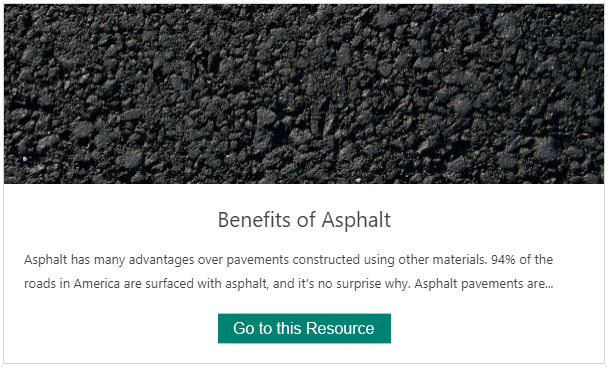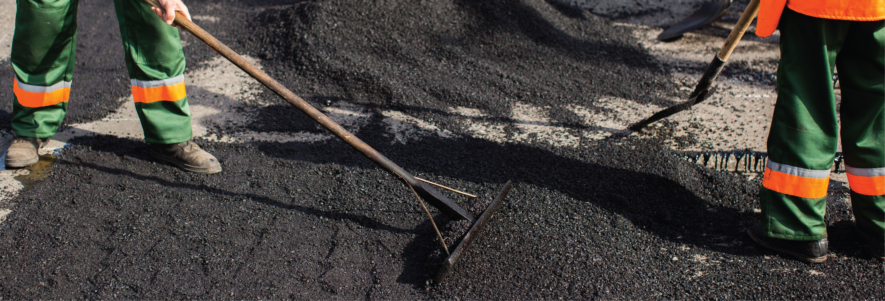How A1 Professional Asphalt & Sealing Llc can Save You Time, Stress, and Money.
How A1 Professional Asphalt & Sealing Llc can Save You Time, Stress, and Money.
Blog Article
The Ultimate Guide To A1 Professional Asphalt & Sealing Llc
Table of ContentsOur A1 Professional Asphalt & Sealing Llc StatementsExcitement About A1 Professional Asphalt & Sealing LlcThe Of A1 Professional Asphalt & Sealing LlcThe 10-Second Trick For A1 Professional Asphalt & Sealing LlcThe Single Strategy To Use For A1 Professional Asphalt & Sealing Llc

The oil in a cars and truck engine is not just oil. It includes a range of additives to enhance the vehicle's efficiency. These consist of polymers, thickness modifiers, heat stabilizers, additional lubricating substances, and wear ingredients. The REOB includes all the ingredients that were in the waste oil in addition to the wear steels from the engine (primarily iron and copper).
Nonetheless, by making many blends making use of different REOB examples and various asphalt binders, the variations largely can be averaged out. A number of States offered samples of known REOB structure to TFHRC scientists, that assessed the samples to contrast the percent of added (understood) REOB to the discovered (tested) amount. The analyses showed a comparable percentage of included and located REOB.
Unknown Facts About A1 Professional Asphalt & Sealing Llc
They received a frustrating reaction. The TFHRC scientists evaluated 1,532 samples from 40 States, one Canadian province, and 2 Government Lands Highway departments. They analyzed each sample twiceamounting to even more than 3,000 analyses. None of those States recognized that the asphalt they were purchasing contained REOB. One State insisted its examples had no REOB.
Of the 1,532 samples evaluated, 12 percent contained REOB, and some had substantially high degrees of it at 1020 percent. The greatest degree was 34 percent in an example from Texas, which TxDOT had actually made use of in a patching compound. This testing additionally revealed the existence of phosphoric acid in 11 percent of the samples, and 2 percent consisted of ground tire rubber.
2 years ago at TRB's annual conference, the Federal researchers held an REOB workshop and provided the findings of their research laboratory evaluations to a standing room-only group. Although some firms do not especially outlaw REOB, they do impose physical tests that prevent its useeffectively a ban. asphalt sealcoating in st louis. Others do not outlaw it by specification, however have agreements with asphalt distributors to prevent using REOB
A1 Professional Asphalt & Sealing Llc Can Be Fun For Everyone
A handful do permit REOB, some within specific limits. For instance, Ohio and Texas limitation levels to less than 5 percent of the asphalt. To create a reliable test technique that all States can use, the TFHRC scientists established a round-robin examination plan. The participants are 11 State highway companies (Illinois, Massachusetts, Minnesota, Mississippi, Montana, North Carolina, Oklahoma, South Carolina, Texas, Vermont, and Wyoming), 2 independent screening labs, the Ministry of Transportation in Ontario, Queen's College in Ontario, and an Ontario paving service provider.
The participants are testing the examples individually making use of the guidelines provided by the TFHRC researchers. The output will be a proposed AASHTO test approach that any kind of State can embrace and utilize.
The sidewalk with REOB, which is situated 0.6 mile (1 kilometer) from the pavement without REOB, has similar subgrade, traffic density, and climate. The section of Highway655 with 5 to 10 percent REOB showed considerable cracking. In this example, the visibility of REOB was the identified reason of breaking at a low temperature levels.
"In our experience in copyright, even little amounts of 23 percent can be a problem." Similarly, a section of examination sidewalk in Minnesota (MN1-4) discovered to include REOB additionally fractured prematurely. The pavement carried out well for the initial 3 to 4 years, however after that began to split. This sidewalk is likewise subject to low temperatures.
A1 Professional Asphalt & Sealing Llc - Truths
The tests were not comprehensive, but they revealed that at levels of 6 percent or more, the tensile strength of the asphalt went down significantly. At a degree of 3.5 percent REOB, the variant in the physical test approaches was above the effect of REOB. It was challenging for scientists to evaluate whether REOB was existing. https://www.goodreads.com/user/show/177529233-john-tally.

One binder criterion taken into consideration is the distinction between the reduced temperature level important specification temperature level for tightness (S) in the bending beam rheometer and the bending beam of light rheometer creep incline (m-value) kept in mind as Tcritical. 2 independent research groups, one from AASHTO and the various other from the Asphalt Institute, wrapped up that even more study is required on the use of REOB in asphalt.
Formerly, all asphalt testing measured design residential properties such as rigidity. These tests do disappoint what products had actually been contributed to the asphalt. One sample obtained throughout the TFHRC research had a very odd evaluation. The sample had the adhering to examination outcomes: site here Superpave PG 64-28 with a high temperature quality of 67.3 Tcritical on the flexing beam of light rheometer was 6.7 degrees Celsius.

The 2-Minute Rule for A1 Professional Asphalt & Sealing Llc
These results demonstrate there are weak points in the standardized engineering testing methods that might be made use of. The producer may have a financial advantage and the product passes all the standardized examinations, yet the product might not be beneficial to making sure lasting efficiency. To resolve this concern and the expansion of new asphalt additives and extenders, TFHRC is beginning a research study program to make use of handheld spectroscopic devices, x-ray fluorescence spectroscopy, and Fourier transform infrared spectroscopy to make it possible for evaluations to be carried out in the field instead than needing to take examples back to the laboratory.
Report this page